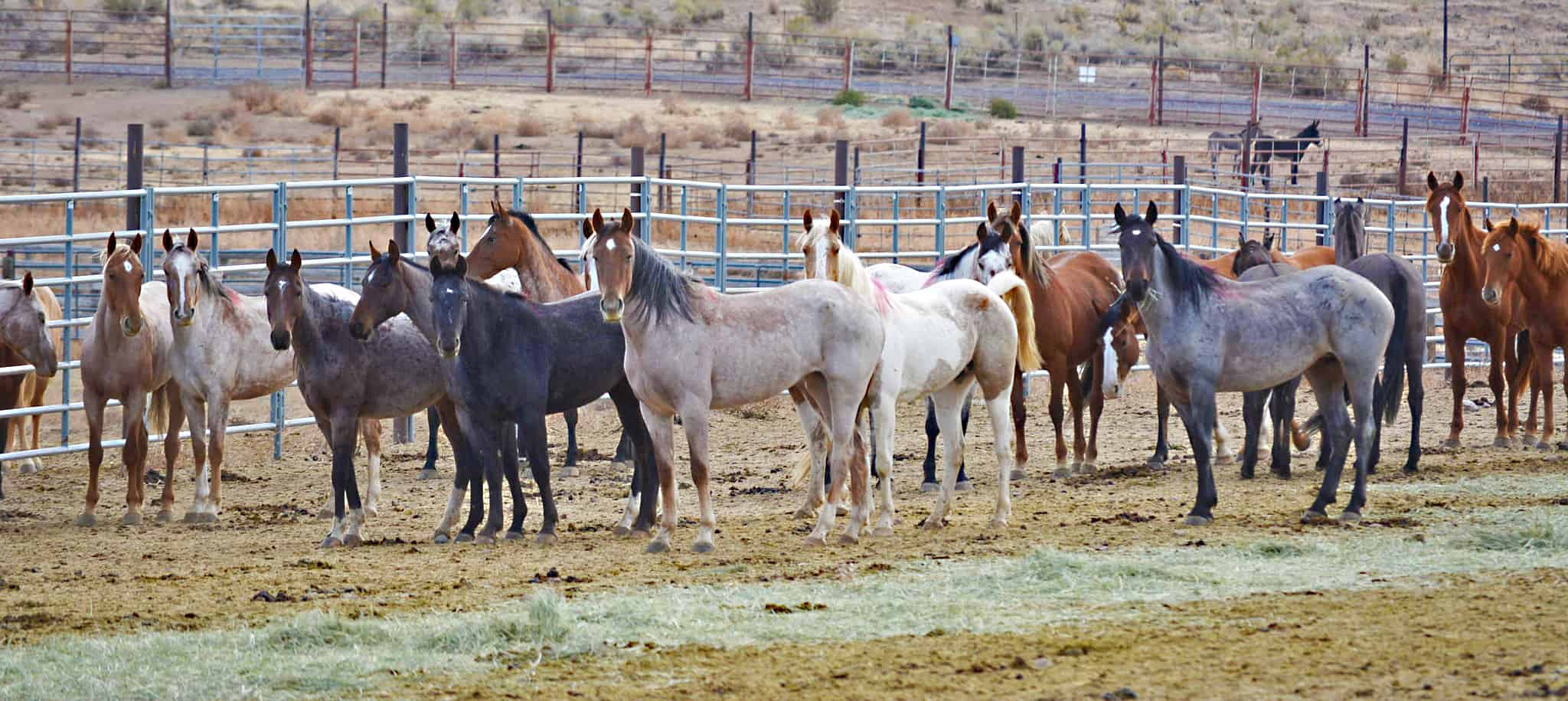Share this article
BLM to return some horses to range in Oregon
Last fall, the Bureau of Land Management gathered 845 wild horses and burros from the Warm Springs Herd Management Area in central Oregon as part of a sterilization research project. The project was to involve surgically sterilizing mares that the agency removed from the public lands.
After the project was challenged in court and a preliminary injunction ordered, the BLM halted the research. Now, it is attempting to find new permanent homes for many of the horses and return others to public lands.
The Warm Springs herd is already close to its appropriate management level, the maximum number of the ecologically feral animals the land can handle without causing undue damage to vegetation, soils and other resources. As a result, the BLM will only return 66 horses to the range. Before doing so, it proposes to use a temporary fertility vaccine on half the horses, all mares. Porcine zona pellucida, or PZP, would make the mares infertile for about one year.
The BLM is accepting comments on its current proposal to temporarily reduce fertility and return horses to the range until March 17.
If the BLM cannot adopt or sell the rest of the hundreds of excess horses it removed from the area, it will be forced to put them in short-term holding corrals or longer-term holding pastures. According to the agency, it can cost up to $48,000 to care for each horse for the rest of its life in holding pens.
The challenged faced by the Warm Springs Herd Management Area is not unusual. Across public lands throughout the west, federal agencies struggle with too many animals for the land and not enough demand for adoption of excess horses.
In the $333 billion spending package Congress recently passed, BLM’s wild horse and burro program is appropriated $80.5 million, a $5 million increase from fiscal year 2018 levels. But there is a catch. Congress notes that “significant management changes need to be made within the near future in order to control costs, improve range conditions, and humanely manage wild horse and burro populations.”
The bill calls for the BLM to conduct an additional analysis and submit a report on its findings to Congress within six months. “The Bureau is expected to continue evaluating its internal policies, procedures, and regulations to reduce costs and administrative burdens, as well as researching and developing appropriate, humane protocols for fertility control methods, including sterilization, and improve its contracting for off-range holdings,” it states.
Congress also stipulated that BLM’s FY2020 budget request include a proposal with its proposed strategy, funding needs and anticipated results of the changes.
This is not the first time Congress has required the BLM to examine its wild horse and burro program. Last spring, the BLM submitted to Congress a report, upon its request, examining four options for the future of the program, including increased gathers, permanent sterilization, more flexibility to sell excess horses and the authority to euthanize some animals.
Congress has not yet formally responded to that report with any sort of legislative changes, although a report by the House Appropriations Committee this summer did ask the BLM to also consider other sterilization and fertility control options such as PZP and offering a $1,000 incentive to those who adopt a wild horse or burro.
Header Image: The Bureau of Land Management may return some wild horses to the Warm Springs Herd Management Area in Oregon. ©BLM Oregon and Washington








